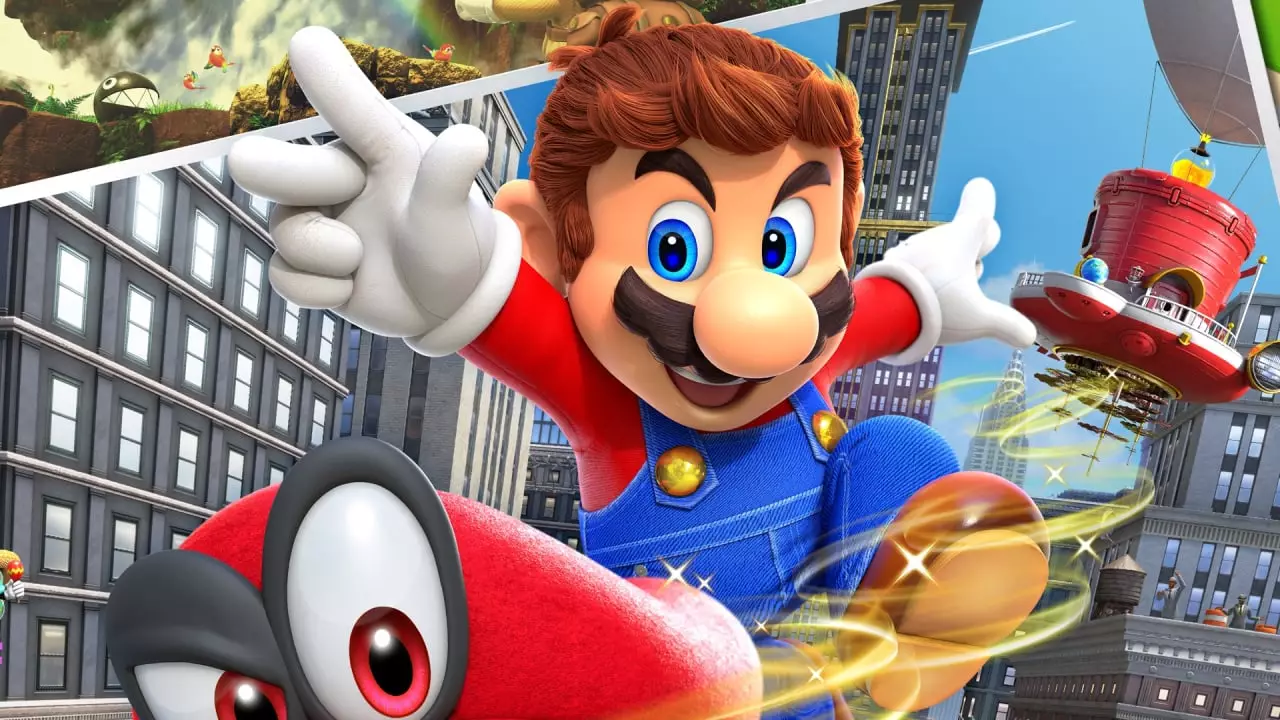The Nintendo gaming community is abuzz with anticipation for the upcoming launch of the Nintendo Switch 2, set to hit shelves on June 5, 2025. One of the standout features that has caught gamers’ attention is the announcement of free updates for a select lineup of existing titles. As any avid gamer will tell you, the allure of updates that enhance gameplay through improved graphics, frame rates, and more is undeniably enticing. However, a closer examination reveals that while the updates promise to transform the gaming experience, they also raise questions about the evolution of gaming as a service.
Identifying the Game-Changers
A total of twelve beloved titles from the original Switch library are slated to receive these enhancements, including fan-favorites like “The Legend of Zelda: Link’s Awakening” and “Super Mario Odyssey.” These are not just mere cosmetic changes—Nintendo is setting the stage for a comprehensive overhaul. The promise of better resolution and higher frame rates indicates a diligent effort to provide a more immersive experience that takes full advantage of advanced hardware capabilities. Console gamers are becoming increasingly accustomed to smooth, high-fidelity visuals, and worse yet, they have seen how certain titles suffer when forced to operate under the limitations of outdated systems. Thus, these updates come as both a welcome relief and a reminder of the transitional developments in gaming technology.
Exploring the Technical Enhancements
Nintendo has teased that the updates will optimize visuals for high-resolution displays, enhancing detail in environments and character animations. The inclusion of HDR support is significant—it suggests a leap towards producing more vibrant colors, deeper contrasts, and generally more aesthetically pleasing graphics. Enhancements to frame rates are equally critical; smoother gameplay is not just a matter of preference but a necessity in today’s fast-paced gaming environment. Multiplayer experiences have become an integral part of social gaming, and with the announcement of improved GameShare capabilities allowing for up to four players simultaneously, it becomes clear that Nintendo is seeking to maintain its relevance in a rapidly evolving market.
However, while these improvements are commendable, there are also indications of a potential overextension. Will these updates be enough to revitalize titles whose core mechanics have grown stale over time? Upgrading graphics can only do so much if the underlying gameplay is not fundamentally enjoyable. Instead of merely dressing up old games, a focus on gameplay innovation is crucial for ensuring long-term engagement and renewed interest.
Pros vs. Cons: The Mixed Bag of Free Updates
Certainly, the announcement that these updates will be free adds another layer of excitement. In an age where downloadable content (DLC) often comes at a premium, Nintendo is positioning itself as a player-friendly option. This approach caters to the nostalgia of long-time fans who have grown accustomed to revisiting classics. However, this strategy did not come without its criticisms. Many observers question why such updates were not implemented sooner, particularly since the hardware limitations of the original Switch have long been a point of contention among dedicated players. Could this move signify that Nintendo has been holding back on enhancing its existing titles to encourage the purchase of the new console?
Moreover, Nintendo’s traditional focus on family-oriented content and social play is commendable, but it also presents a paradox. While it’s fantastic to see deeper multiplayer functionalities in these updates, will the focus on multiplayer entice solo gamers? This demographic, which often feels overlooked, plays an essential role in the longevity of any game. Hence, solely promoting multiplayer experiences overlooks a significant portion of the player base that craves quality single-player content.
The Future of Gaming With the Switch 2
The excitement surrounding the Nintendo Switch 2’s launch and its accompanying updates serves as a reflection of the broader trends in the gaming industry. The increasing importance of digital updates and online connectivity has reshaped how consumers view their gaming libraries. Gone are the days when a game was a standalone product; instead, the gaming experience has evolved into a dynamic service model.
The free update initiative thus stands as both a celebration of Nintendo’s legacy and a challenge for the company to adapt to contemporary expectations. Moving forward, players will undoubtedly anticipate not only beautifully rendered games but also innovative experiences that enrich their time spent in play. The question that looms large is whether these changes are merely a trend or the future of gaming itself. Nintendo has a remarkable opportunity to lead the way, but it must ensure that its innovations resonate with the desires of an evolving gaming community.


Leave a Reply